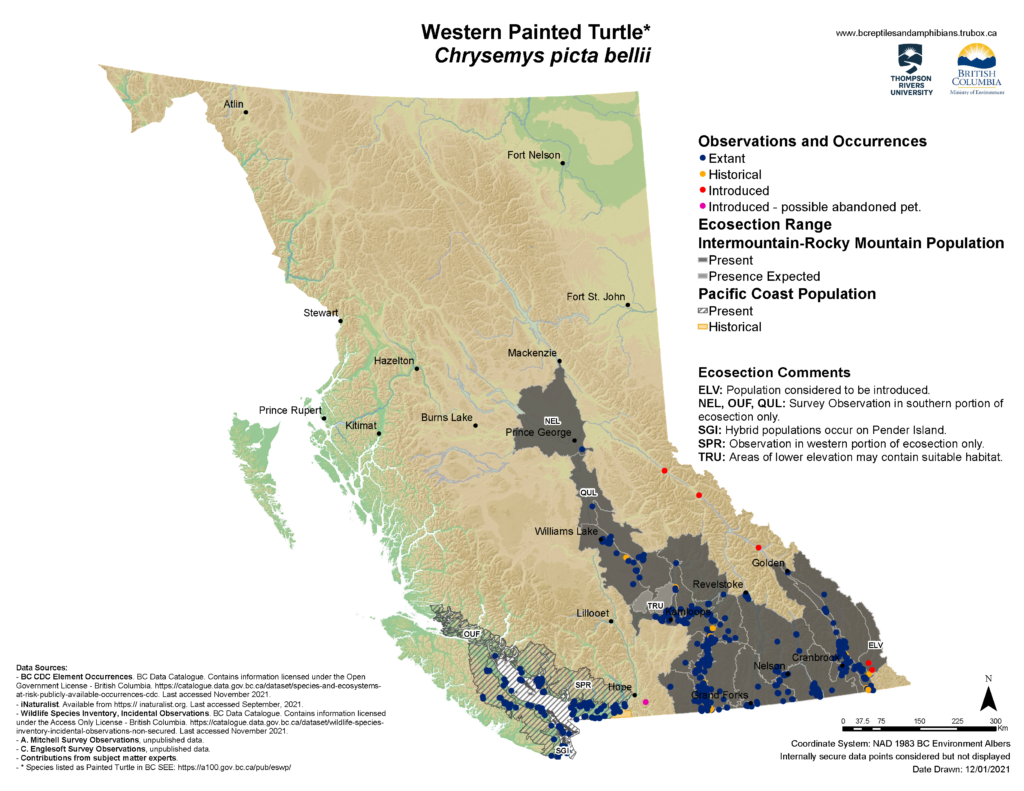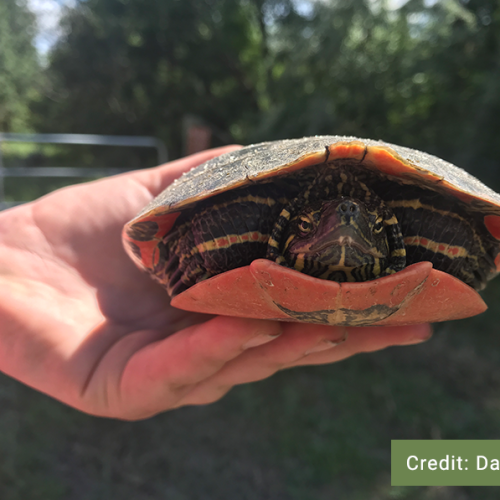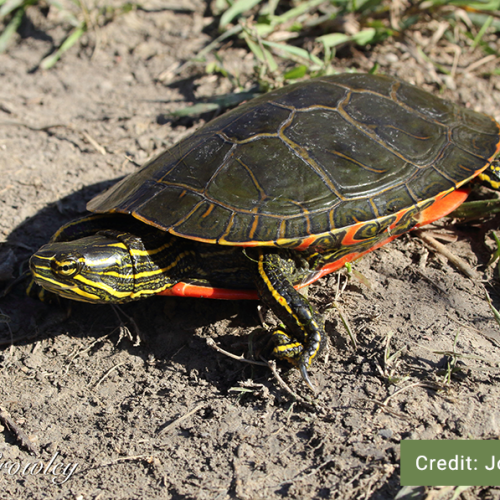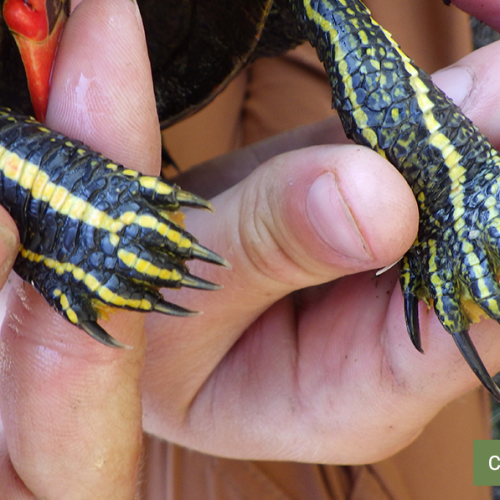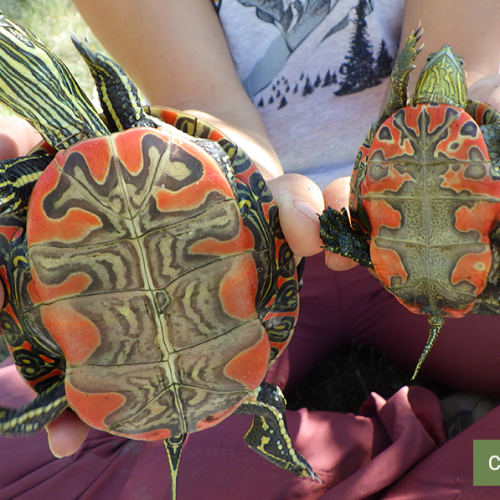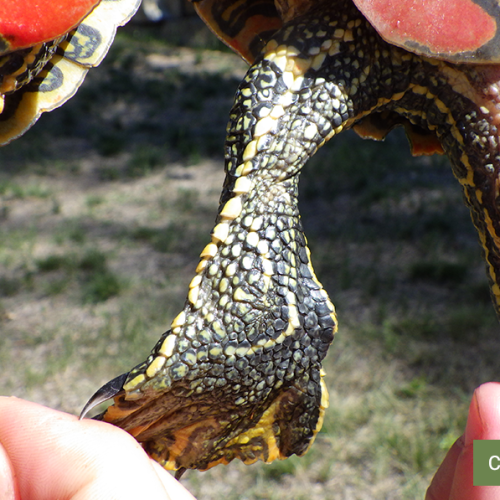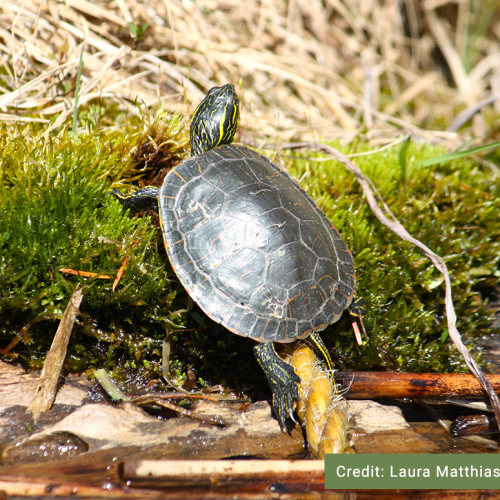Credit: Joe Crowley
Western Painted Turtle
Chrysemys picta
Description
Listen to the Indigenous words for “turtle” here!
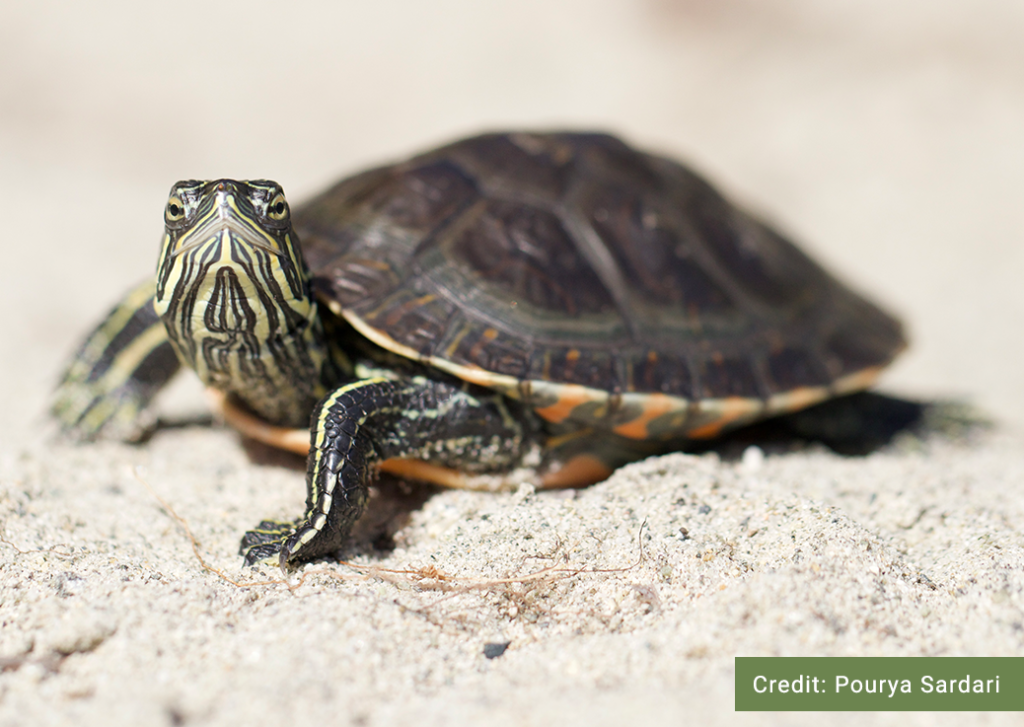
Similar Species
The Western Painted Turtle may be confused with the other two species of pond turtle in British Columbia, the Red-eared Slider and the Northwestern Pond Turtle. Western Painted Turtles can often be seen basking with Red-eared Sliders where they have been introduced, but can be easily distinguished as Sliders have distinct red ‘ears’ or stripes on the sides of their head that are visible from a distance. Western Painted Turtles are much more brightly coloured than the Northwestern Pond Turtle with yellow stripes on the neck and legs.
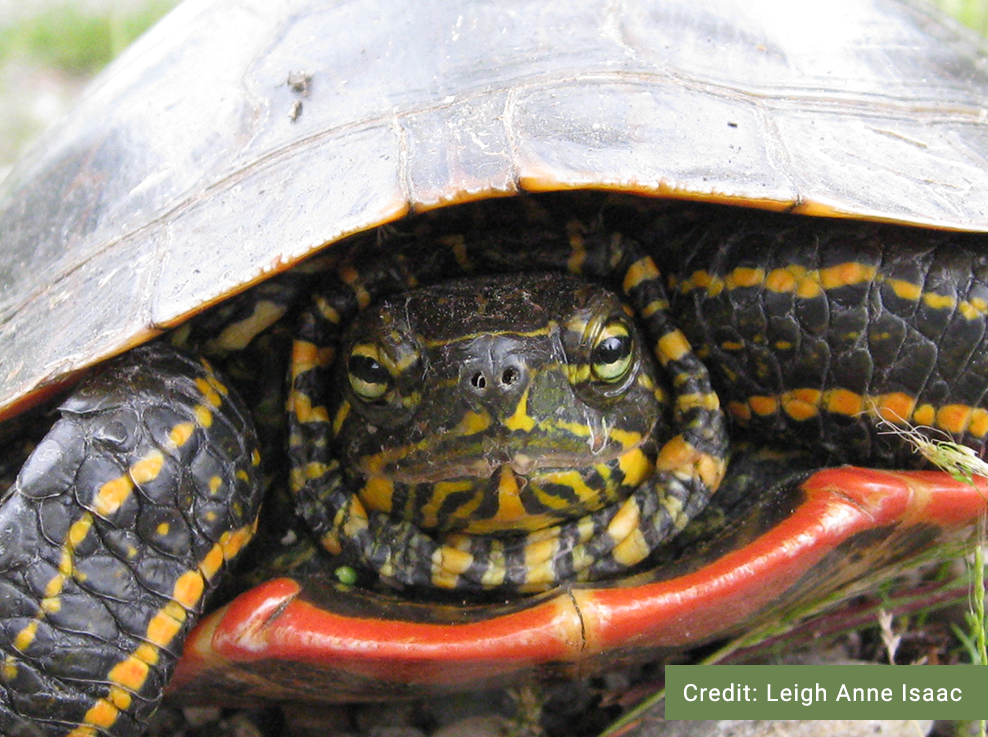
Western Painted Turtle
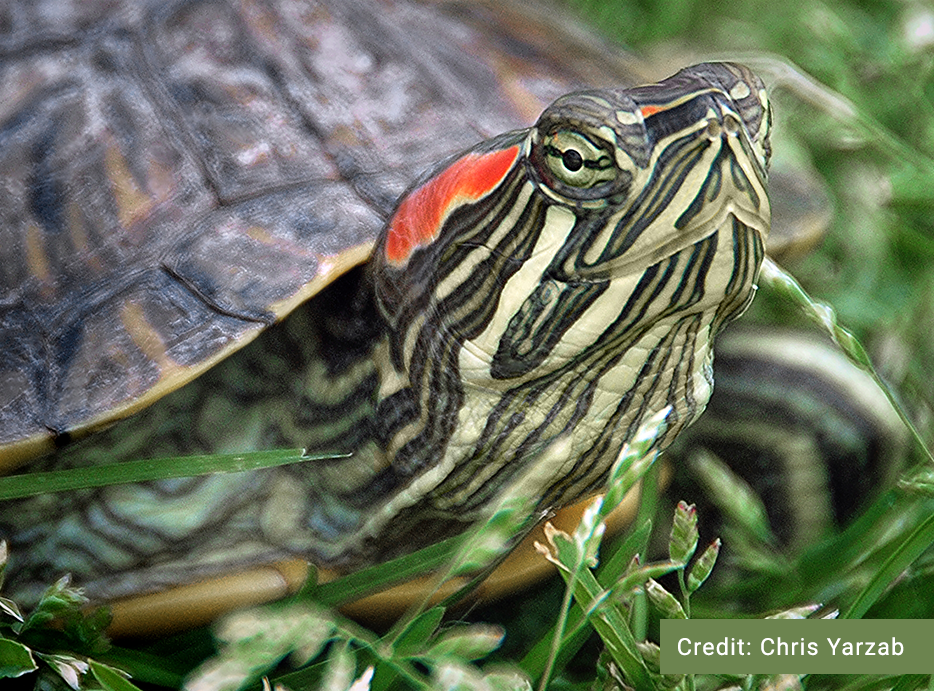
Red-eared Slider
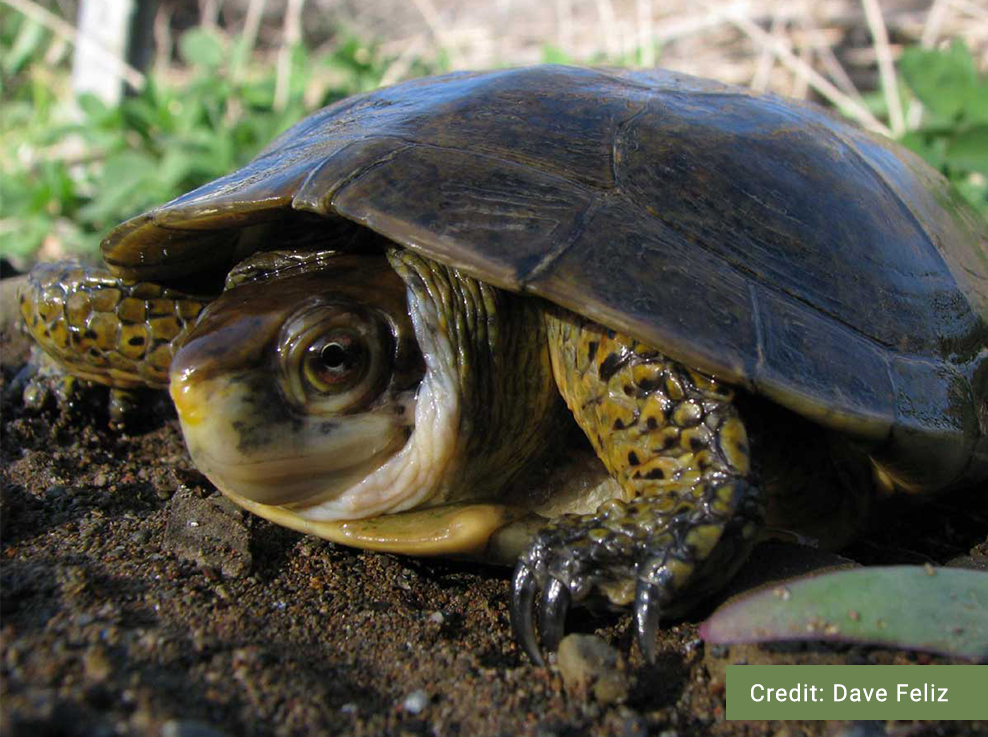
Northwestern Pond Turtle
Distribution
Habitat
Reproduction
Diet
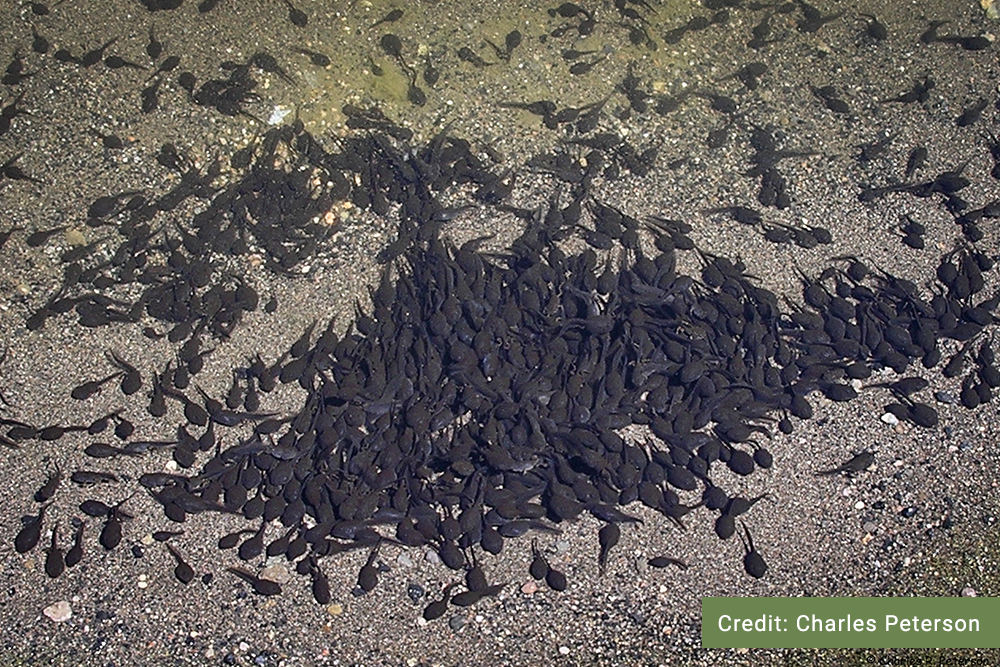
Conservation Status
Global: G5 (2016); G5T2 (2007) Pacific Coast Pop.; G5T2T3 (2008) Intermountain Pop.
COSEWIC: T – Pacific Coast Pop.; SC – Intermountain Pop
SARA: 1-E/SC (2007); 1-E (2007) Pacific Coast Pop.; 1-SC (2007) Intermountain Pop.
Provincial: S3 (2018); S1S2 (2018) Pacific Coast Pop.; S3 (2018) Intermountain Pop.
BC List: Red – Pacific Coast Pop.; Blue – Intermountain Pop.
Learn more about conservation status rankings here
Threats
If you see a Western Painted Turtle, the best thing to do is to keep your distance. Be aware when in turtle habitat so that you don’t trample nest sites. Never take wild turtles home as pets; turtles often starve to death in captivity.
Did You Know?
Western Painted Turtles always swallow their food under water, as it is difficult for them to swallow dry food.
Species Account Author: Marcus Atkins
B.C. Conservation Data Centre. 2010. Species Summary: Chrysemys picta. B.C. Minist. of Environment. Available:https://a100.gov.bc.ca/pub/eswp/ (accessed Jun 23, 2021).
B.C. Conservation Data Centre. 2011. Conservation Status Report: Chrysemys picta pop. 2. B.C. Minist. of Environment. Available: https://a100.gov.bc.ca/pub/eswp/ (accessed Jun 23, 2021).
B.C. Conservation Data Centre. 2018. Conservation Status Report: Chrysemys picta pop. 1. B.C. Minist. of Environment. Available: https://a100.gov.bc.ca/pub/eswp/ (accessed Jun 23, 2021).
B.C. Conservation Data Centre. 2021. BC Species and Ecosystems Explorer. B.C. Minist. of Environ. Victoria, B.C. Available: https://a100.gov.bc.ca/pub/eswp/ (accessed Jun 23, 2021).
B.C. Ministry of Environment. 2017c. Management plan for the Painted Turtle – Intermountain– Rocky Mountain Population (Chrysemys picta pop. 2) in British Columbia. B.C. Ministry of Environment, Victoria, BC. 31 pp.
COSEWIC 2016d. COSEWIC assessment and status report on the Western Painted Turtle Chrysemys picta bellii (Pacific Coast population, Intermountain – Rocky Mountain population and Prairie/Western Boreal – Canadian Shield population) in Canada. Committee on the Status of Endangered Wildlife in Canada. Ottawa. vii + 40 pp
Environment and Climate Change Canada. 2018. Recovery Strategy for the Western Painted Turtle (Chrysemys picta bellii) Pacific Coast population in Canada [Proposed]. Species at Risk Act Recovery Strategy Series. Environment and Climate Change Canada, Ottawa. 2 parts, 31 pp. + 59 pp.
Environment and Climate Change Canada. 2018h. Management Plan for the Western Painted Turtle (Chrysemys picta bellii) Intermountain – Rocky Mountain population in Canada. Species at Risk Act Management Plan Series. Environment and Climate Change Canada, Ottawa. 2 parts, 4 pp. + 31 pp.
The Western Painted Turtle Recovery Team. 2016b. Recovery plan for the Painted Turtle – Pacific Coast Population (Chrysemys picta pop. 1), in British Columbia. B.C. Ministry of Environment, Victoria, BC. 89 pp. Repr. of 1st ed., The Western Painted Turtle Recovery Team, Victoria, BC. 89 p. (Orig. pub. 2016)
http://canadianherpetology.ca/species/species_page.html?cname=Western%20Painted%20Turtle
http://linnet.geog.ubc.ca/efauna/Atlas/Atlas.aspx?sciname=Chrysemys%20picta
https://www.bcreptiles.ca/turtles/westernpaint.htm
https://www2.gov.bc.ca/gov/content/environment/plants-animals-ecosystems/wildlife/wildlife-conservation/amphibians-reptiles/turtles

